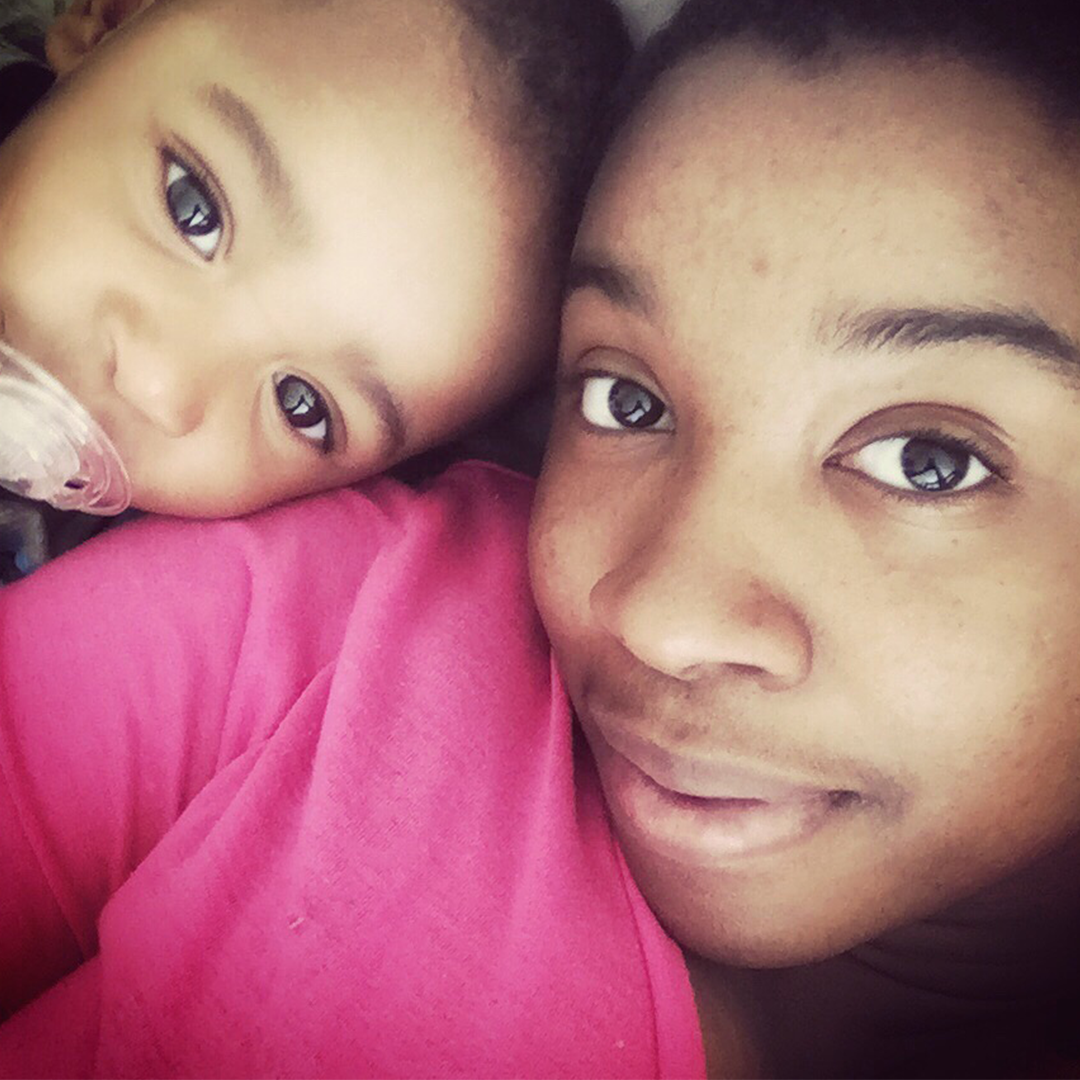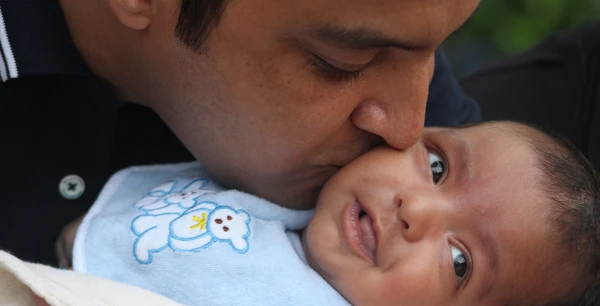Your 4-month-old’s sleep may feel unpredictable—one night they sleep a longer stretch, the next they wake up every two hours. Or maybe naps were improving, and suddenly, they’ve become shorter and less consistent.
That’s because around this age, your baby’s sleep patterns mature, making sleep feel different than it did in the newborn stage. This big developmental leap—also known as the 4-month sleep regression—can be tough, but it means your baby’s brain is growing.
Let’s walk through what’s happening with your baby’s sleep at 4 months, how much rest they need, and how to set up a flexible sleep schedule to support better sleep for your little one.
Understanding Your 4-Month-Old’s Sleep
At 4 months, babies experience a permanent shift in sleep cycles. Instead of drifting into deep sleep right away (like newborns do), they now cycle between light and deep sleep, similar to an adult.
This means:
- More wake-ups at night, especially between sleep cycles
- Shorter naps (often 30–45 minutes) since they now fully wake between cycles
- Increased awareness, making it harder for them to settle
At this age, your baby needs about 14–16 hours of total sleep, typically:
- 10–12 hours at night (with 1–3 wake-ups for feeding)
- 3–4 hours of daytime sleep, spread across 3–4 naps
If your baby is waking every 1–2 hours at night, they may need help learning to connect sleep cycles and self-soothe.

What to Expect with the 4-Month Sleep Regression
The 4-month sleep regression is not actually a regression—it’s a progression in how your baby sleeps. Their brain is maturing, and while this can lead to more wake-ups at night and shorter naps, it’s also an opportunity to start gently shaping healthy sleep habits.
How to Handle the Sleep Regression:
- Stick to a routine: Predictability is comforting for your baby. Keep wake-up times, naps, and bedtime as consistent as possible for the4 month sleep regression.
- Help your baby fall asleep in their crib: If they always fall asleep in your arms and then wake in the crib, they may struggle to settle. Try placing them drowsy but awake so they learn to fall asleep where they will wake up.
- Use a calming bedtime routine: A warm bath, gentle massage, and quiet story can help cue your baby’s body for sleep.
- Prioritize naps: Overtiredness makes sleep harder. Offer naps every 1.5–2.5 hours based on wake windows.
This stage is temporary. Most babies adjust within a few weeks with consistent routines.
Wake Windows for a 4-Month-Old
Wake windows (the time your baby is awake between naps) help balance daytime sleep so they’re not overtired or under-tired at bedtime.
Typical wake windows at 4 months:
- 1.5 to 2 hours between naps
- 2–2.5 hours before bedtime (this is usually the longest)
Watch for sleep cues like:
- Yawning
- Rubbing eyes
- Fussing or zoning out
When you see these cues, aim to put your baby down before they become overtired, which can make it harder for them to settle.
Sample 4-Month-Old Sleep Schedule
This schedule is a guide, not a rule. Every baby is different. The goal is consistency with flexibility—adjust as needed based on your baby’s cues.
| Time | Activity |
|---|---|
| 6:30 AM | Wake-up & feeding |
| 8:00 AM | Nap 1 (1–1.5 hours) |
| 9:30 AM | Awake & playtime |
| 11:00 AM | Nap 2 (1 hour) |
| 12:00 PM | Awake & feeding |
| 1:45 PM | Nap 3 (45 min–1 hour) |
| 2:45 PM | Awake & playtime |
| 4:30 PM | Nap 4 (30–45 minutes) |
| 5:15 PM | Awake & feeding |
| 6:45 PM | Bedtime routine |
| 7:15 PM | Bedtime |
If naps are short (30–45 minutes), don’t panic. Many 4-month-olds take short naps. Offer naps frequently to prevent overtiredness.
Helping Your Baby Sleep Longer Stretches at Night
Most 4-month-olds still need 1–3 feedings overnight, but if they’re waking every hour, here are some things to check:
- Are they getting enough calories during the day? A well-fed baby is more likely to sleep longer stretches.
- Are they falling asleep independently? If your baby relies on rocking, feeding, or bouncing to fall asleep, they may wake needing the same thing. Try gradually reducing how much you assist them at bedtime.
- Is their sleep environment optimized? A dark room, white noise, and a comfortable temperature (68–72°F) help babies sleep longer.
If your baby wakes frequently, try pausing for a moment before rushing in—sometimes, they settle back to sleep on their own.
Safe Sleep Tips for a 4-Month-Old
- Always place your baby on their back to sleep, even for naps.
- Use a firm crib mattress with a snug-fitted sheet.
- No loose blankets, pillows, or stuffed animals in the crib.
- If your baby is rolling, it’s time to stop swaddling and transition to a sleep sack.
Safe sleep reduces the risk of SIDS and helps your baby sleep more securely.
Building a Calming Bedtime Routine
A predictable bedtime routine helps your baby wind down and signals that sleep is coming. Try:
- Bath or gentle wipe-down
- Massage with baby-safe lotion
- Quiet story or lullaby
- Final feeding in a dim, quiet room
- Lay baby down drowsy but awake
Keeping the same steps in the same order each night helps your baby learn when it’s time to sleep.
Final Thoughts: Gentle Sleep Strategies for Your 4-Month-Old
At 4 months, sleep can feel unpredictable, but that’s okay. Focus on:
- Following wake windows to prevent overtiredness.
- Encouraging independent sleep skills with “drowsy but awake” when possible.
- Keeping a simple, consistent bedtime routine.
- Being patient—sleep patterns are still developing.
Every baby is different. If something isn’t working, adjust gently and stay consistent.
Citations
- L. Fangupo, J. Haszard, A. Reynolds, Albany W Lucas, Deborah R. McIntosh, R. Richards, Justine Camp, B. Galland, Claire Smith and R. Taylor. “Do sleep interventions change sleep duration in children aged 0-5 years? A systematic review and meta-analysis of randomized controlled trials.” Sleep Medicine Reviews, 59 (2021): 101498 . https://doi.org/10.1016/j.smrv.2021.101498.
- Willumsen, J., & Bull, F. (2020). Development of WHO Guidelines on Physical Activity, Sedentary Behavior, and Sleep for Children Less Than 5 Years of Age. Journal of Physical Activity & Health, 17 1, 96-100 . https://doi.org/10.1123/jpah.2019-0457.
- Centers for Disease Control and Prevention. “Important Milestones: Your Baby by Four Months.” CDC, October 22, 2018. https://www.cdc.gov/ncbddd/actearly/milestones/milestones-4mo.html.
- MedlinePlus. “Bedtime Habits for Infants and Children.” MedlinePlus, October 21, 2022. https://medlineplus.gov/ency/article/002392.htm.
- A. Wheaton and A. Claussen. “Short Sleep Duration Among Infants, Children, and Adolescents Aged 4 Months–17 Years — United States, 2016–2018.” Morbidity and Mortality Weekly Report, 70 (2021): 1315 – 1321. https://doi.org/10.15585/mmwr.mm7038a1.
- P. Devnani. “Paediatric Sleep Medicine.” The Indian Journal of Sleep Medicine, 5 (2010): 105-110. https://doi.org/10.5005/IJSM-5-4-105.
- Mindell, J., Meltzer, L., Carskadon, M., & Chervin, R. (2009). Developmental Aspects of Sleep Hygiene: Findings from the 2004 National Sleep Foundation Sleep in America Poll. Sleep Medicine. https://doi.org/10.1016/j.sleep.2008.07.016.
- S. Paruthi, L. Brooks, C. D’Ambrosio, W. Hall, S. Kotagal, Robin M. Lloyd, B. Malow, K. Maski, C. Nichols, S. Quan, C. Rosen, M. Troester and M. Wise. “Recommended Amount of Sleep for Pediatric Populations: A Consensus Statement of the American Academy of Sleep Medicine.” Journal of Clinical Sleep Medicine, 12 6 (2016): 785-6 . https://doi.org/10.5664/jcsm.5866.
- Paul B. Tchounwou, Nour Makarem, Faris Zuraikat, E. Adams, Peyton Mosher, B. Armstrong, S. Burkart, R. Weaver, Michael W. Beets, E. R. Siceloff and R. Prinz. “Barriers to Optimal Child Sleep among Families with Low Income.” International Journal of Environmental Research and Public Health, 20 (2023). https://doi.org/10.3390/ijerph20010862.
- Holliday-Bell, Angela. “A Parent’s Guide to Sleep Training Infants and Toddlers – UChicago Medicine.” UChicago Medicine, May 24, 2023. www.uchicagomedicine.org/forefront/pediatrics-articles/2023/may/sleep-training-in-infants-and-toddlers.
- Galland, B., Taylor, B., Elder, D., & Herbison, P. (2012). Normal Sleep Patterns in Infants and Children: A Systematic Review of Observational Studies. Sleep Medicine Reviews, 16 3, 213-22 . https://doi.org/10.1016/j.smrv.2011.06.001.
- U.S. Department of Labor. “Family and Medical Leave Act.” Dol.gov. Accessed September 22, 2024. https://www.dol.gov/agencies/whd/fmla.
- R. Spencer and Tracy Riggins. “Contributions of Memory and Brain Development to the Bioregulation of Naps and Nap Transitions in Early Childhood.” PNAS, 119 (2022). https://doi.org/10.1073/pnas.2123415119.





